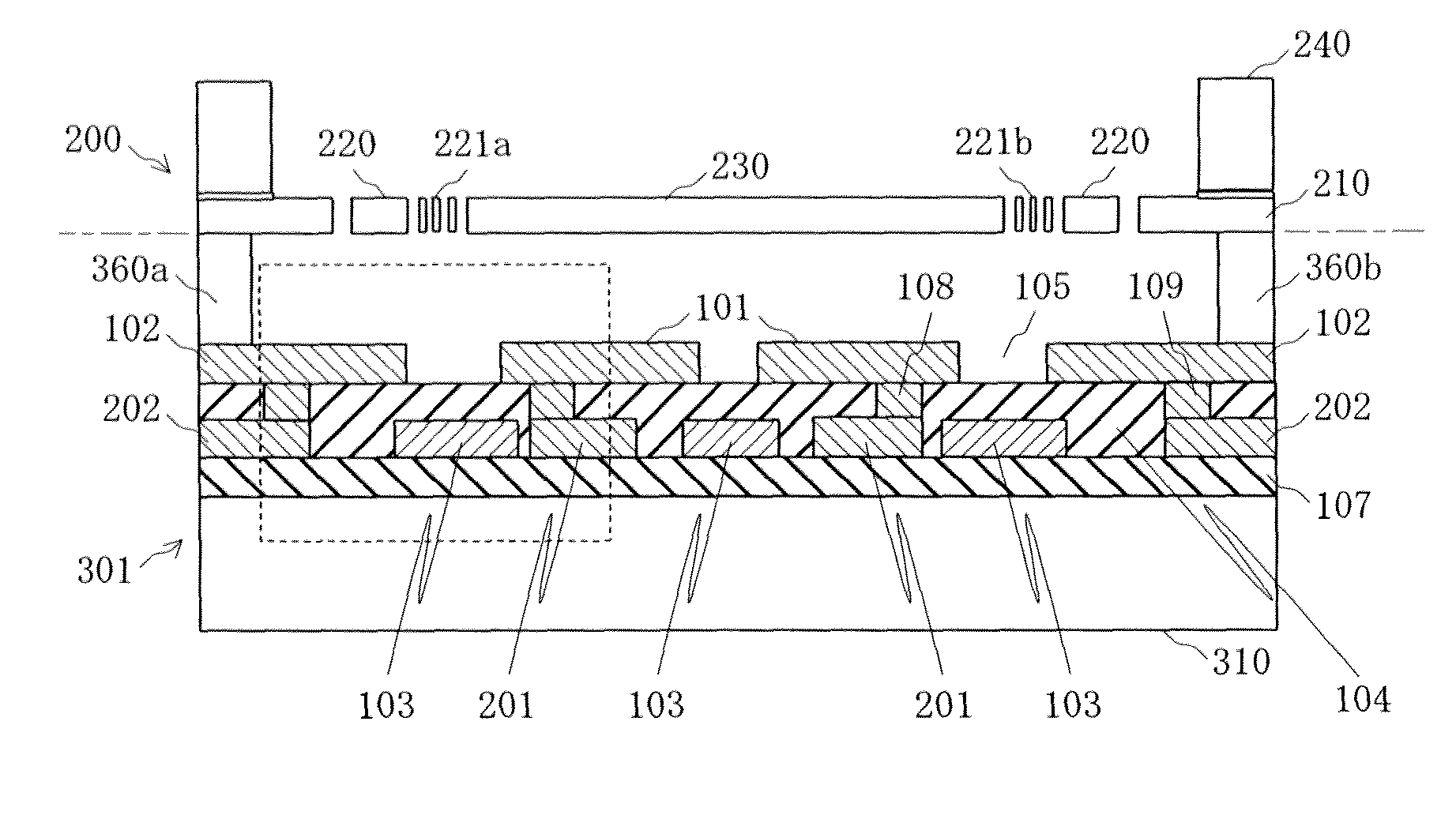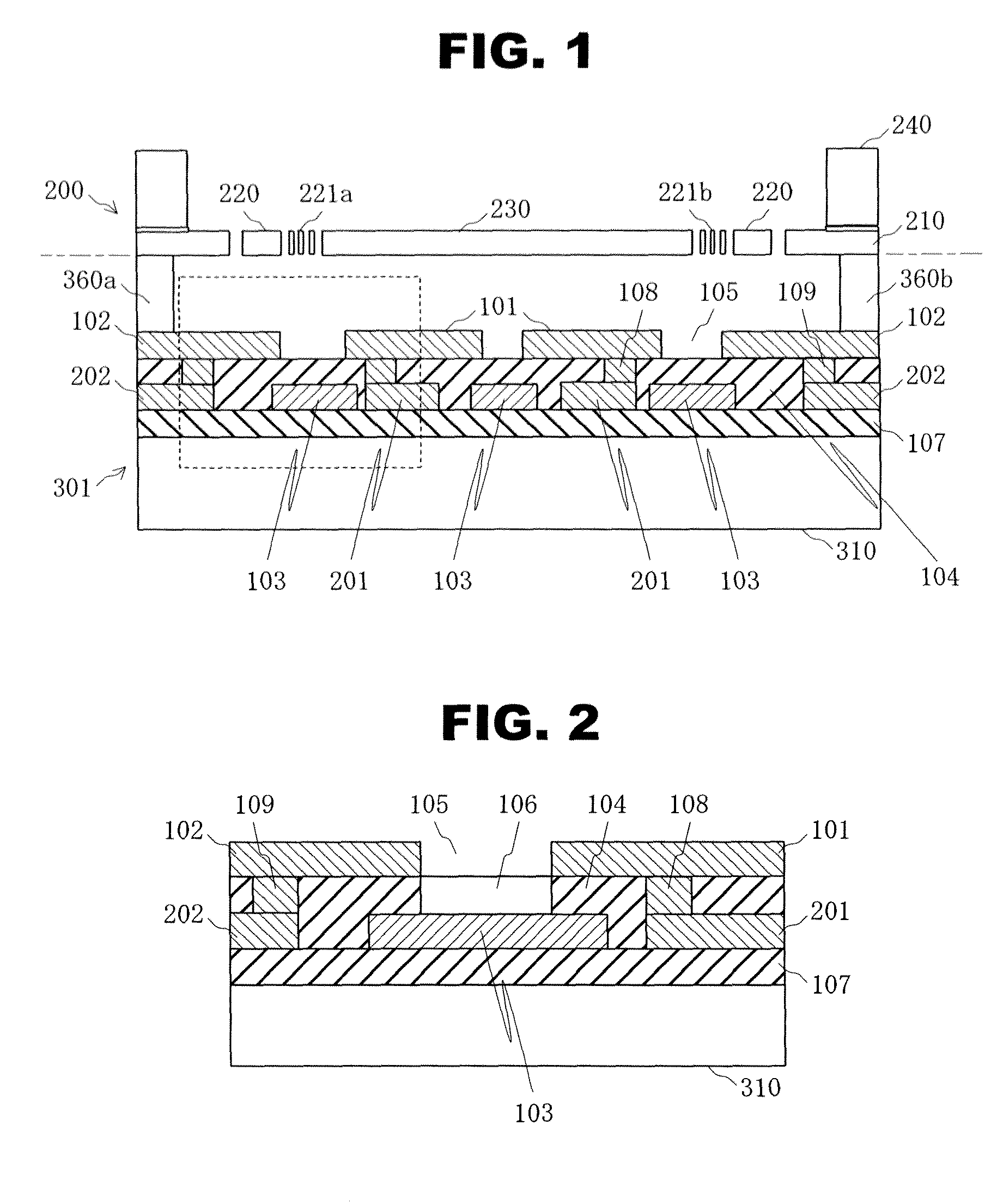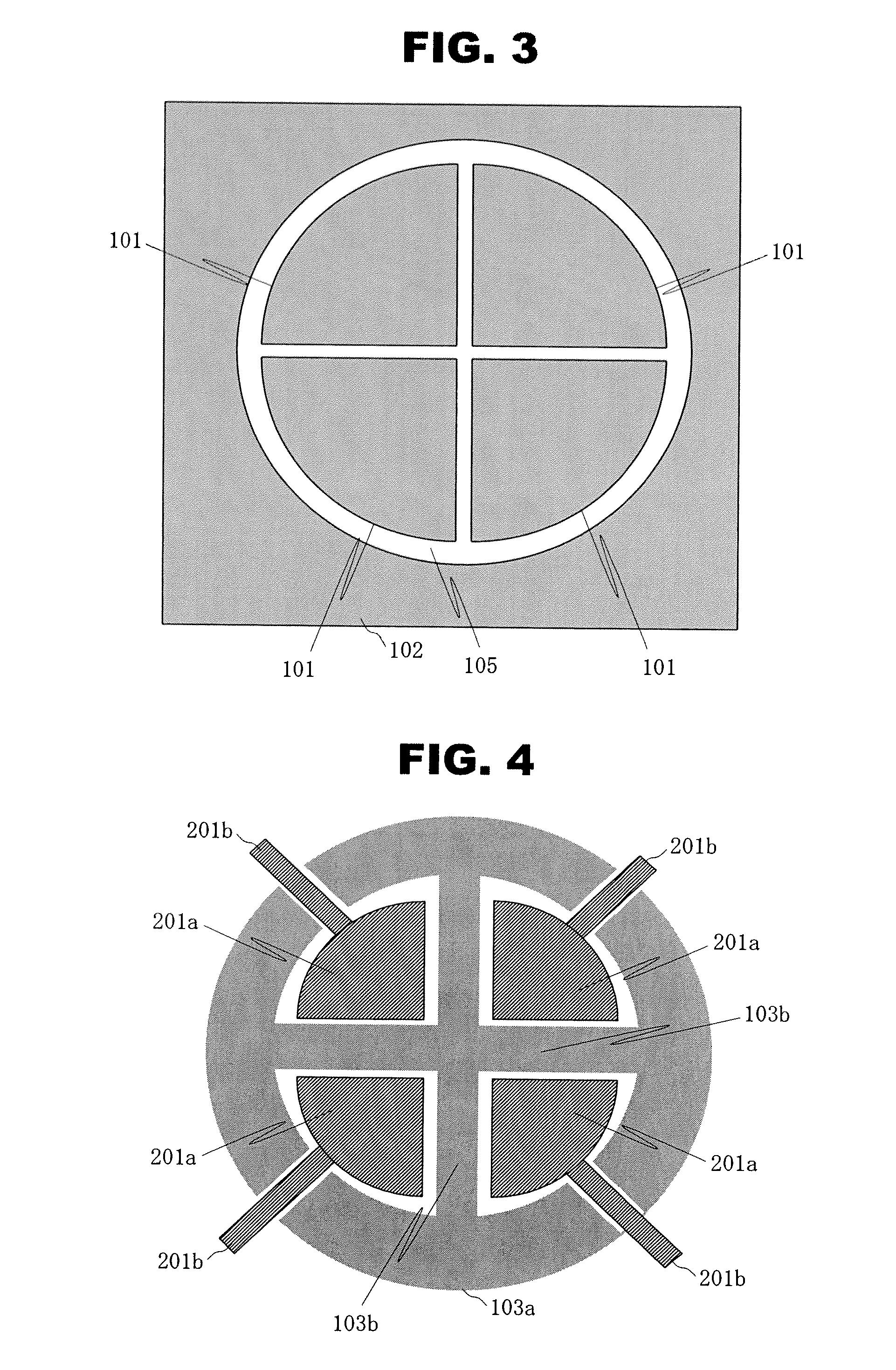MEMS device and method of manufacturing the same
a technology of a movable member and a manufacturing method, which is applied in the direction of instruments, other domestic objects, optical elements, etc., can solve the problems of difficult to reduce the mirror interval of the micromirror device, and the inability to guide light of a wavelength concerned to an output port, so as to reduce or prevent charge accumulation, suppress the tilt angle of the movable member, and prevent metal film formation
- Summary
- Abstract
- Description
- Claims
- Application Information
AI Technical Summary
Benefits of technology
Problems solved by technology
Method used
Image
Examples
first embodiment
[0103]An embodiment of the present invention will now be described in detail with reference to the accompanying drawings. FIG. 1 is a sectional view of a micromirror device that is an electrostatically driven MEMS device according to the first embodiment of the present invention. Note that a mirror array is formed by one- or two-dimensionally disposing a plurality of micromirror devices shown in FIG. 1. The micromirror device according to this embodiment has a structure in which a mirror substrate 200 serving as a first substrate having a mirror and an electrode substrate 301 serving as a second substrate having electrodes are disposed in parallel.
[0104]The mirror substrate 200 has almost the same structure as that of the mirror substrate of the conventional micromirror device. The mirror substrate 200 includes a plate-shaped frame portion 210 having an opening with an almost circular shape viewed from above, a gimbal 220 having an opening with an almost circular shape viewed from a...
second embodiment
[0145]FIG. 7 is a sectional view of a micromirror device that is an electrostatically driven MEMS device according to the second embodiment of the present invention. FIG. 7 is an enlarged sectional view of a region indicated by the dotted line in FIG. 1. Note that a mirror array is formed by one- or two-dimensionally disposing a plurality of micromirror devices shown in FIG. 7.
[0146]In this embodiment, the insulating film 104 serving as a charge accumulation region exposed to the region of the gap 105 in the micromirror device according to the first embodiment is partially or wholly removed. The remaining components are the same as in the first embodiment.
[0147]In the micromirror device according to the second embodiment, an insulating film 104 under the region of a gap 105 is removed to expose a lower electrode 103 to the space. This structure can further reduce the area of the insulating film 104 exposed to the space. It is therefore possible to reduce drift of the mirror tilt ang...
third embodiment
[0149]FIG. 8 is a plan view showing the electrode arrangement of a micromirror device according to the third embodiment of the present invention. This plan view illustrates underlying lower electrodes 103 and driving electrode electrical interconnections 201 seen through driving electrodes 101 and a peripheral electrode 102. A peripheral electrode electrical interconnection 202 is not illustrated in FIG. 8.
[0150]In the first embodiment, the lower electrodes 103 include the annular lower electrode 103a and the cross-shaped lower electrode 103b. In the third embodiment, a lower electrode 103a is omitted, and only a lower electrode 103a is formed. In addition, the area of driving electrode electrical interconnections 201a, which is smaller than that of the driving electrodes 101 in the first embodiment, is increased so that the driving electrode electrical interconnections 201a extend up to the region where the lower electrode 103a existed. The lower electrode 103b is formed into a cro...
PUM
 Login to View More
Login to View More Abstract
Description
Claims
Application Information
 Login to View More
Login to View More - R&D
- Intellectual Property
- Life Sciences
- Materials
- Tech Scout
- Unparalleled Data Quality
- Higher Quality Content
- 60% Fewer Hallucinations
Browse by: Latest US Patents, China's latest patents, Technical Efficacy Thesaurus, Application Domain, Technology Topic, Popular Technical Reports.
© 2025 PatSnap. All rights reserved.Legal|Privacy policy|Modern Slavery Act Transparency Statement|Sitemap|About US| Contact US: help@patsnap.com



